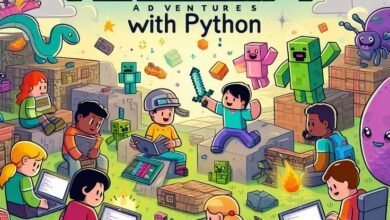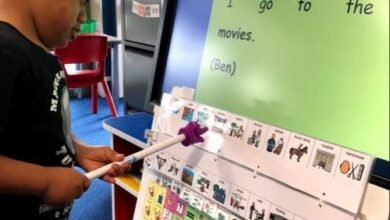A Deadly Education: A Dark Fantasy Novel by Naomi Novik
A Deadly Education: A Dark Fantasy Novel by Naomi Novik

Introduction
Education has always been a battleground of ideals, challenges, and growth — but what happens when you take that struggle to its literal extremes? Naomi Novik’s A Deadly Education offers a fantastical yet darkly relevant critique of the educational system, wrapped in a gripping story filled with magical peril. While its setting—a dangerous school filled with monsters called the Scholomance—is fictional, many of its themes are startlingly real and applicable to modern education.
Through its pages, Novik doesn’t just entertain; she challenges readers to rethink the societal values that underpin learning environments, the diversity of student experiences, and the education system as a whole. This blog explores the core elements of A Deadly Education, its impact, and how educators and students alike can draw meaningful lessons to better real-world educational experiences.
Themes of A Deadly Education
At its core, A Deadly Education is an unflinching exploration of survival, privilege, equity, and the complex web of social dynamics that define schooling.
Survival as a Constant
The Scholomance is no ordinary school. Students constantly face life-threatening dangers, with monsters lurking in every corner. This literal fight for survival magnifies parallels in high-pressure, highly competitive educational environments today. For many students, especially those from underprivileged or marginalized backgrounds, “survival” takes the form of navigating tuition fees, societal expectations, or a lack of resources—an ongoing battle fought alongside academic challenges.
Privilege and Inequality
The book also reflects on how privilege shapes opportunities, even in a deadly and “equalizing” environment like the Scholomance. Wealthy students in the novel can rely on family legacies and magical resources passed down to them. Similarly, in the real world, systemic inequities often skew education in favor of those with greater access to resources. Novik’s commentary asks us to question what true equity in education looks like and how institutions can uplift all students.
Power of Collaboration and Community
Despite the dangers of the Scholomance, some of Novik’s most meaningful lessons address the importance of collaboration over competition. Students form alliances not out of convenience, but out of the realization that teamwork enhances their chances of survival. This aspect is a powerful metaphor for modern education, which often leans on competition through ranking systems rather than fostering communal learning environments.
The Book’s Impact on How We See Educational Institutions
Novik’s portrayal of the Scholomance serves as both an allegory and critique of traditional educational systems. The book challenges hierarchical structures, assessments of merit, and the emphasis on individual achievement over collective progress.
A High-Stakes Parable
The Scholomance magnifies the pressures of academics into life-or-death stakes. While real-world education isn’t about fighting literal monsters, students often face “monsters” such as stress, burnout, and the pressure to meet unattainable standards. By framing these struggles in a fictional context, A Deadly Education invites educators to reconsider policies or structures that contribute to such issues.
Fostering Inclusivity
While some students in the Scholomance arrive with advanced resources, not all do. This inequity fosters a discussion about the gaps in accessibility experienced by students in real-world education. Novik subtly critiques gatekeeping practices that limit access to quality education, arguing instead for greater inclusivity.
A Closer Look at the Characters
The richly drawn characters in A Deadly Education each represent different facets of the student experience.
El Higgins, a Reluctant Hero
The protagonist, El Higgins, struggles against stereotypes and preconceived notions about her abilities. Gifted with immense power yet battling stigma, she is a mirror for students who are underestimated despite their talent. Her resilience highlights the importance of fostering self-worth in education and dismantling biases that hinder students’ growth.
Orion Lake, the Savior Complex
Orion, the heroic counterpart to El, represents students who rely on their privilege to solve problems, sometimes to the detriment of others. His character is a reminder that even well-intentioned individuals can unintentionally perpetuate unequal systems, a theme educators can draw on to create awareness of privilege.
The Ensemble Cast
The book’s diverse cast of students brings to life different backgrounds, challenges, and strengths. This representation encourages readers to consider the value of diverse perspectives in learning environments. Every student brings something unique to the table, underscoring the need for inclusivity, empathy, and mutual respect.
Novik’s Writing Style and Its Effectiveness
Naomi Novik’s evocative and uncompromising writing style breathes life into the high-stakes world of the Scholomance.
Building a Tangible World
The blend of dry humor and vivid descriptions draws readers into the Scholomance’s perilous halls. This world-building mirrors the layered complexity of modern institutions, forcing readers to grapple with the parallels between fiction and reality.
Conveying Lessons Through Narrative
Novik’s ability to weave moral lessons seamlessly into fast-paced storytelling keeps readers hooked while delivering profound insights. Her portrayal of flawed yet relatable characters ensures each lesson resonates on a deeply personal level, making the book a valuable resource for educators looking to inspire their students.
Applying Lessons from A Deadly Education to Real Schools
While most educators don’t have to worry about students battling monsters, A Deadly Education offers lessons that extend beyond fiction.
Encourage Collaboration Over Competition
Teach students the value of teamwork by introducing more collaborative projects and group discussions. Highlight how working together allows everyone to achieve success, fostering a sense of community in the classroom.
Address Inequities Head-On
Identify systemic barriers that create unequal access to quality education. Whether through scholarships, mentorship programs, or equitable grading systems, educators can work toward leveling the playing field for all students.
Promote Resilience and Growth Mindset
El’s character arc is a reminder that personal growth often stems from adversity. By fostering a growth mindset, educators can encourage students to see challenges as opportunities for learning rather than as insurmountable obstacles.
Create Inclusive Learning Environments
Like the diverse student body at the Scholomance, real classrooms should celebrate individuality and diversity. Encourage open conversations about different backgrounds and experiences within your educational settings.
Support Student Well-being
High-stress environments, whether fictional or real, take a toll. Incorporate mindfulness practices and provide resources for mental health support to help students manage academic pressures, much as alliances in the Scholomance helped students survive.
Turning Ideas into Action
The darkly enchanting world of A Deadly Education offers profound insight into the challenges of education, both fictional and real. By applying its lessons, educators can strive to create environments that foster collaboration, address inequities, and celebrate individuality—all while setting students up for success.
What are your thoughts on Novik’s critique of education? Join the conversation—share your insights on social media using #ADeadlyEducation and tag us at @[YourBrandHandle] to keep the discussion going!



